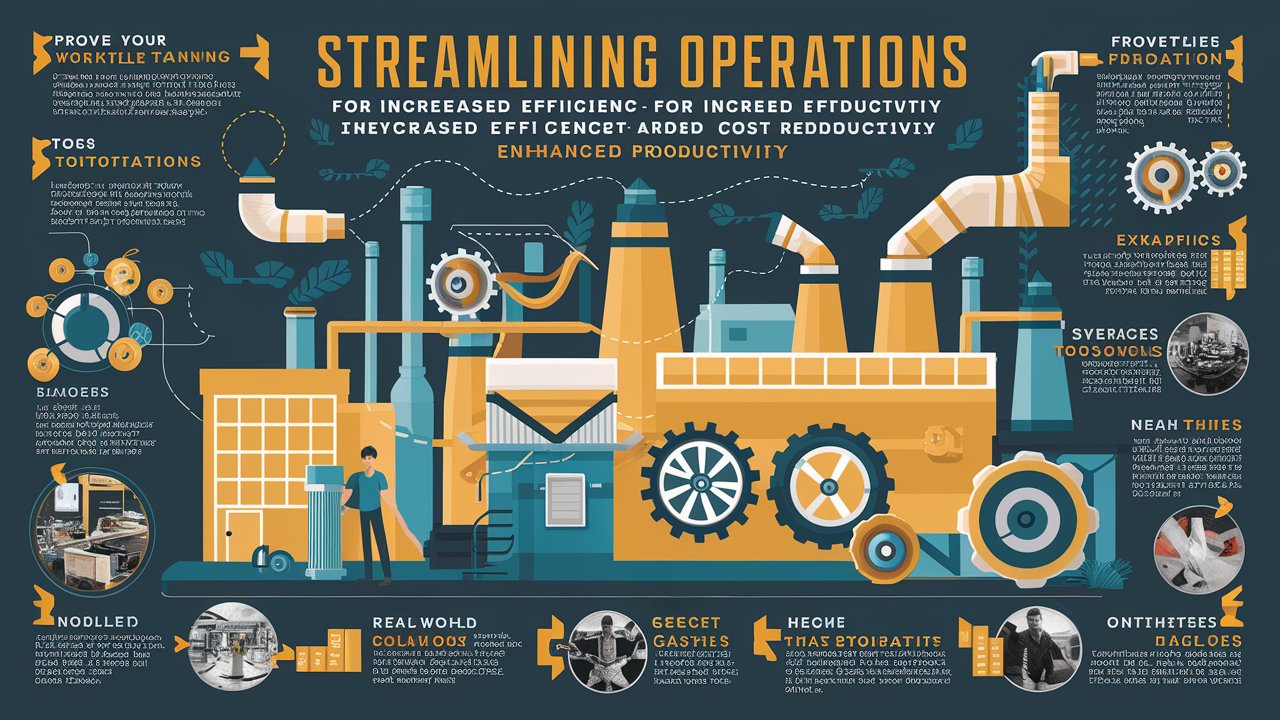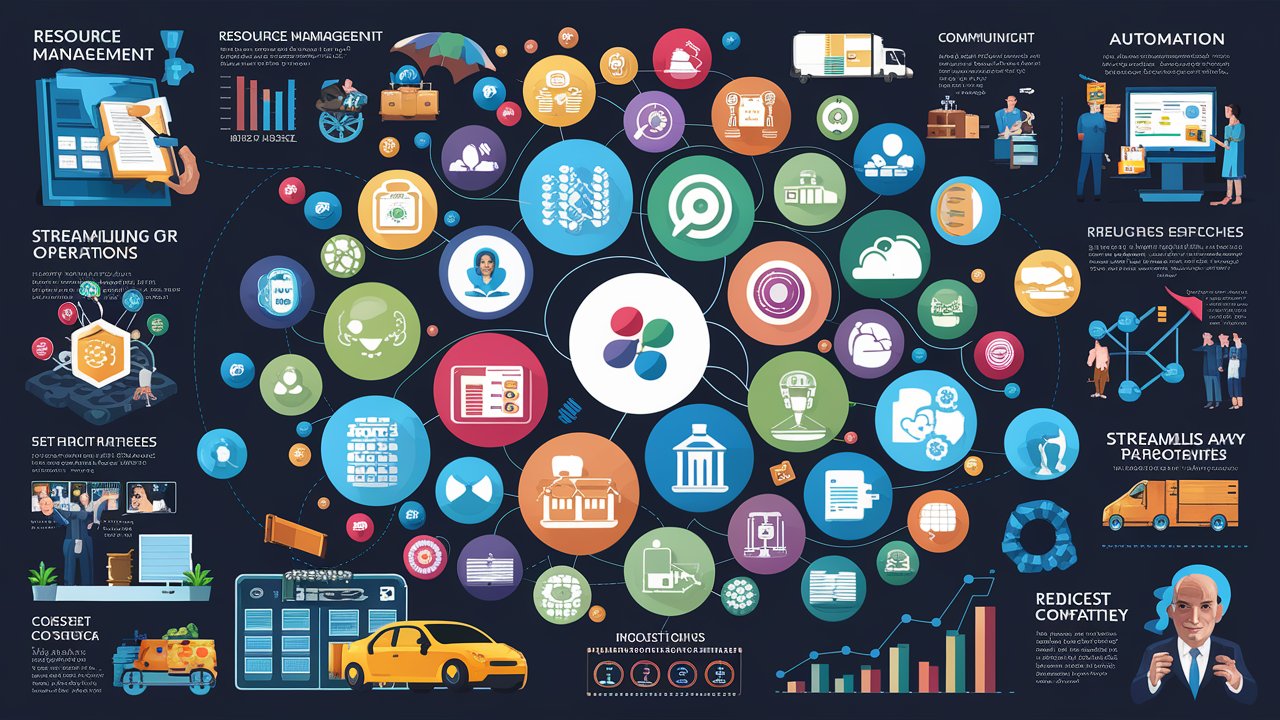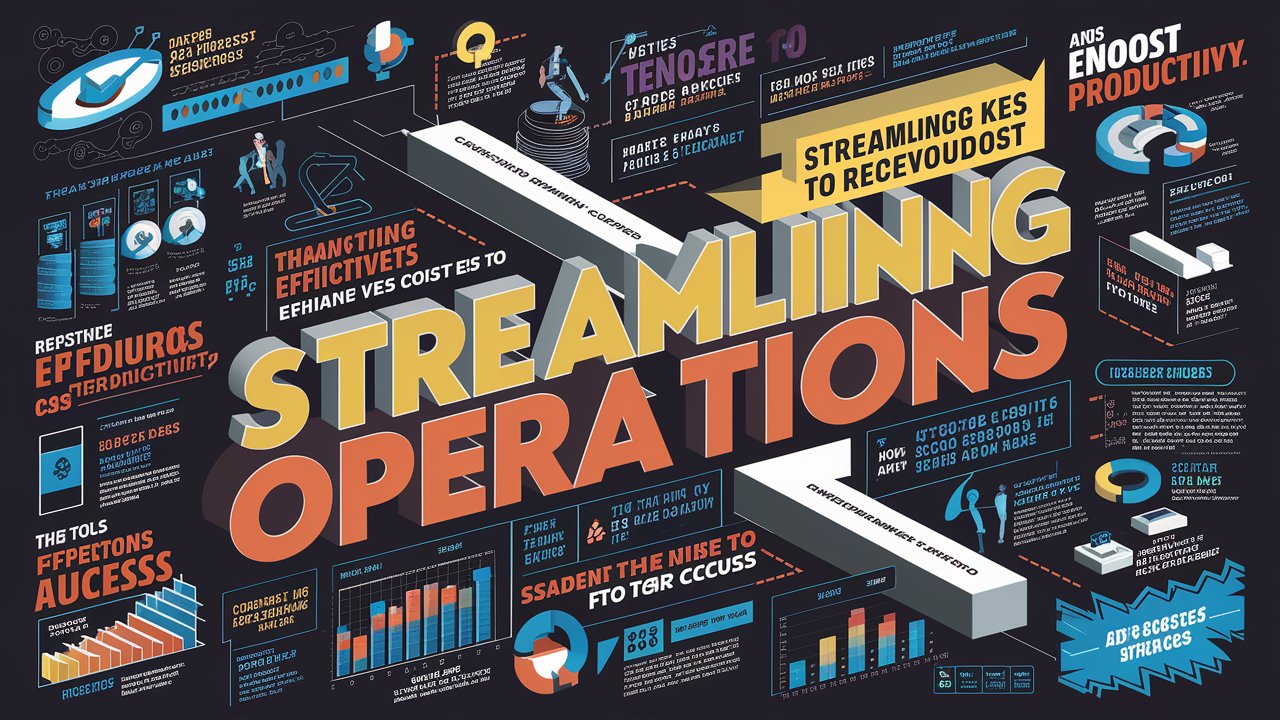Introduction
Streamline Operations In today’s fast-paced business environment, streamlining operations is essential for maintaining a competitive edge. By optimizing processes, businesses can increase efficiency, reduce costs, and improve overall productivity. This article delves into the importance of streamlining, the steps involved, and the benefits it brings to organizations.
Understanding Streamlining
Streamlining refers to the practice of simplifying and improving processes to enhance efficiency and effectiveness. It involves removing unnecessary steps, automating repetitive tasks, and ensuring that workflows are as smooth and efficient as possible. For businesses, streamlining is crucial because it helps them stay agile, competitive, and responsive to market changes.
Key Benefits of Streamlining Operations
Streamlining operations offers several key benefits:
- Increased Efficiency and Productivity: By eliminating bottlenecks and automating tasks, employees can focus on their core responsibilities, leading to higher productivity.
- Cost Reduction: Streamlined processes reduce waste and lower operational costs.
- Improved Employee Morale and Collaboration: Simplified workflows enhance communication and collaboration among teams, boosting morale.
- Enhanced Customer Satisfaction: Efficient processes lead to faster service delivery and higher quality products, improving customer satisfaction.
- Risk Mitigation and Error Reduction: Automated processes reduce the likelihood of manual errors and minimize risks.
Identifying Processes to Streamline
To begin streamlining, businesses must first identify which processes need improvement:
- Criteria for Selecting Processes: Look for processes that are time-consuming, error-prone, or redundant.
- Common Inefficiencies: Identify bottlenecks, excessive handoffs, and manual data entry tasks.

Steps to Streamline Operations
Streamlining involves several key steps:
- Mapping Out Existing Processes: Document the current workflows to understand their structure and identify areas for improvement.
- Conducting a Business Process Analysis: Analyze each process to determine its effectiveness and identify inefficiencies.
- Setting Clear Objectives and Goals: Define what you aim to achieve through streamlining, such as reduced cycle times or cost savings.
- Involving Stakeholders and Process Owners: Ensure that everyone involved in the process has input and is on board with the changes.
Leveraging Technology
Technology plays a pivotal role in streamlining operations. Tools and software can automate tasks, improve communication, and provide real-time data for better decision-making:
- Workflow Automation Tools: Automate repetitive tasks to save time and reduce errors.
- ERP and CRM Systems: Integrate various business functions into a single system for better coordination and data management.
- Process Documentation Tools: Use tools to document and standardize processes, ensuring consistency and compliance.
Methodologies for Streamline Operations
Several methodologies can guide businesses in their streamlining efforts:
- Lean Management: Focuses on creating value for customers by eliminating waste and optimizing workflows. Learn more about Lean Management Principles.
- Six Sigma: Aims to reduce defects and improve quality through data-driven decision-making. Understand the basics of Six Sigma.
- Business Process Reengineering (BPR): Involves completely redesigning processes to achieve dramatic improvements in performance. Explore more about Business Process Reengineering.
Implementing Changes
Successful implementation of streamlined processes requires careful planning and execution:
- Developing a Plan for Implementation: Create a detailed plan that outlines the steps, resources, and timeline for the implementation.
- Change Management Strategies: Use effective change management techniques to ensure smooth transitions and minimize resistance.
- Training Employees and Getting Buy-in: Provide training and support to help employees adapt to the new processes and understand their benefits.
Monitoring and Continuous Improvement For Streamline Operations
Continuous monitoring and improvement are essential to maintain streamlined operations:
- Setting KPIs and Benchmarks: Establish key performance indicators (KPIs) and benchmarks to measure the success of the new processes.
- Regular Review and Adjustments: Periodically review processes and make necessary adjustments to ensure they remain efficient.
- Importance of Feedback Loops: Gather feedback from employees and customers to identify areas for further improvement.
Case Studies and Examples for Streamline Operations
Real-world examples can provide valuable insights into the benefits of streamlining:
- Company A: Improved order processing times by 40% through workflow automation.
- Company B: Reduced operational costs by 30% by implementing Lean Management principles.
- Company C: Enhanced customer satisfaction by 25% by reengineering their customer service processes.
Common Challenges and Solutions

Streamlining operations can present challenges, but they can be addressed with the right strategies:
- Resistance to Change: Involve employees in the planning process and communicate the benefits of the changes.
- Maintaining Quality and Customer Satisfaction: Ensure that streamlining efforts do not compromise product or service quality.
- Balancing Cost and Efficiency: Evaluate the impact of changes on all stakeholders to strike the right balance.
FAQs
What are the first steps to streamline operations?
- Start by mapping out existing processes and conducting a business process analysis to identify inefficiencies.
How long does it take to see the benefits of streamlining?
- The timeline can vary, but businesses often start seeing benefits within a few months of implementation.
Can small businesses benefit from streamlining?
- Yes, streamlining can help small businesses operate more efficiently and compete with larger organizations.
Conclusion
Streamlining operations is a powerful strategy for improving efficiency, reducing costs, and enhancing overall business performance. By leveraging technology, adopting proven methodologies, and continuously monitoring and improving processes, businesses can achieve significant gains in productivity and competitiveness.
Embrace the journey of streamlining and watch your business thrive in the ever-evolving marketplace.
